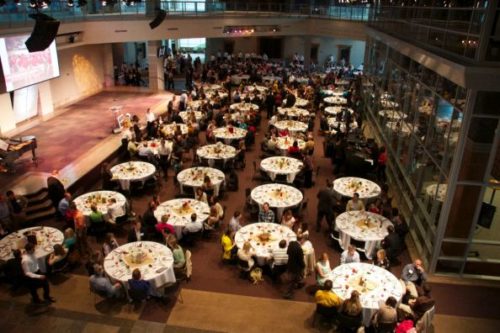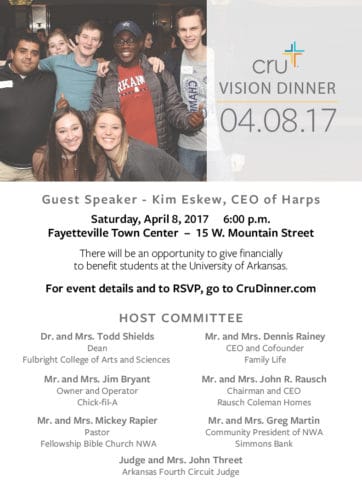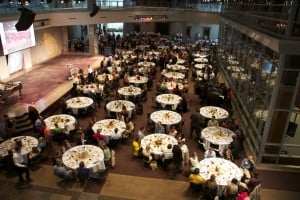Sharing is caring, so I thought I’d post my email that I sent back to him so everyone can benefit:
- Do you have a particular structure for how the evening goes?Â
- Here’s a timeline of our dinner – the structure for how the evening goes.
- We have one “live testimony” from a student and then have several student life change stories via video. We save the video for the very end before we ask people to give because it’s usually the most moving part of the night. Here’s those videos from 2016 and 2015.
- Here’s a script of what our MC’s say
- How do you go about inviting people?Â
- We have our students send invitations to their parents (this is a HUGE win if parents come- they walk away loving Cru instead of suspecting that we are a cult; so when their son/daughter wants to go on summer mission or intern with us, they are for us instead of against us!)Â .
- But other than that we almost exclusively invite people via table hosts (here’s a link to that strategy). We’ve pretty much stopped printing paper invitations (we only printed 100 this year – we used to do 1,500!) and almost exclusively do digital invites via email and Ministry Sync (an online dinner management tool – not cheap, but worth it for bigger dinners)
-
Do you ask for financial commitments there, or do you pay the groundwork and then follow-up with individual meetings? Do you primarily ask for/receive one-time gifts or ongoing monthly gifts?
- We definitely ask for financial commitments. I don’t do any follow up after the dinner. Here’s my talk from last year – so you can see how I ask for money.
- As you can see in my talk – I really push for monthly gifts. That way, even if they don’t come to your dinner next year, they will still be giving to your ministry. But we mostly get one time gifts. But we’ve grown our monthly giving from $100/mo to $2,000/mo over the years.
- Do you do them on campus or somewhere else?

- We do our dinner off campus at our Fayetteville Town Center (a big ballroom where they hold conventions or wedding receptions). But on campus would be great if there’s a good room.
- What else should I consider or know?
- Really, the main thing to know is what I say in this post -  that getting table hosts is by FAR the most important goal.
- You can expect to make $20-25,000 for every 100 people you have at the dinner. Or to put it in different terms, for every table host you get, you will make about $2,000.
 We do a silent auction at the dinner. It’s grown over the years:
We do a silent auction at the dinner. It’s grown over the years:
- 2016 – $12,400
- 2015 – $10,475
- 2014 – $8,345
- 2013 – $5,800



